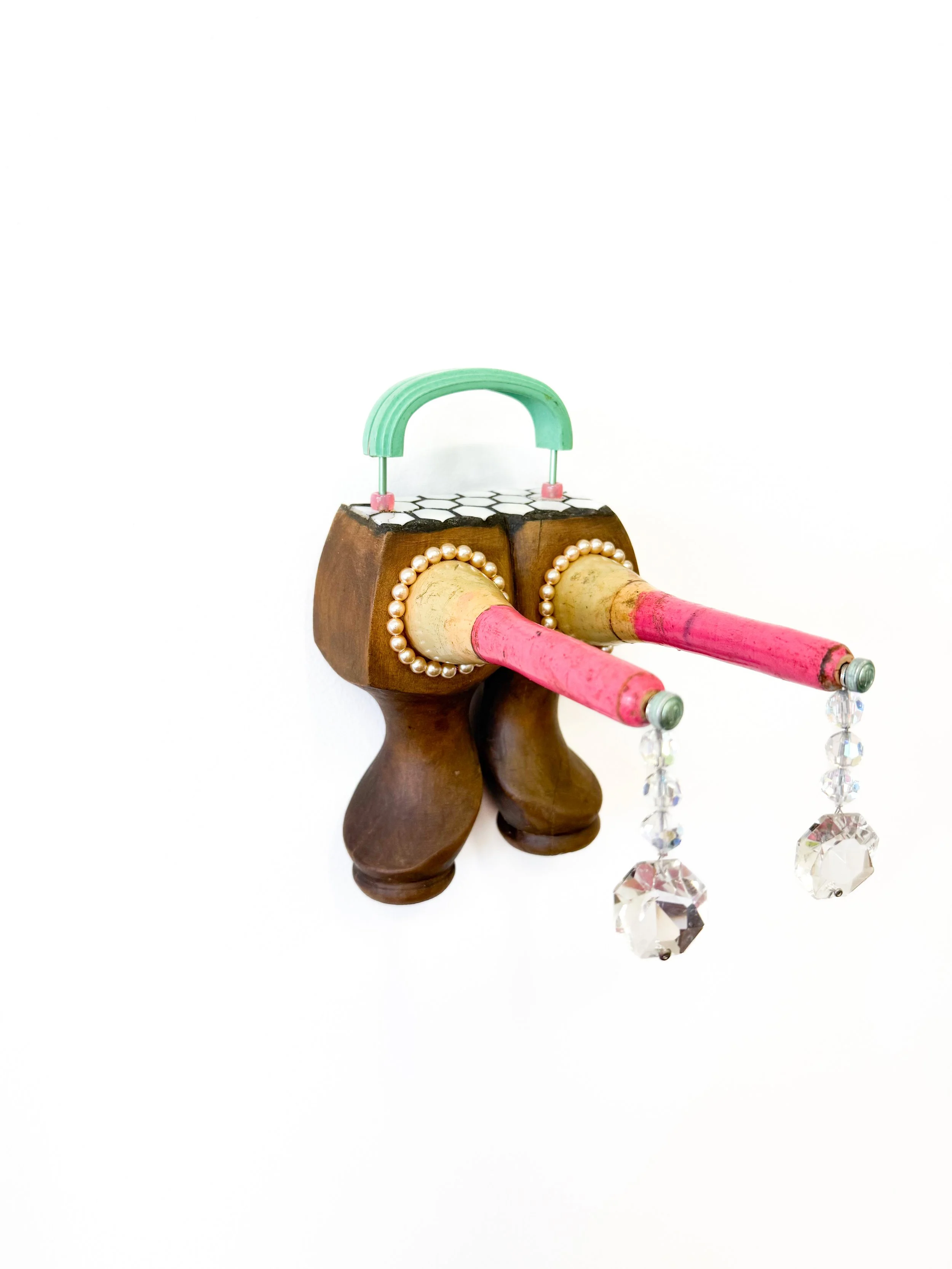2026 | The Tenderness of Things
13 to 27 March 2026, Q Gallery, Ainslie
Opening night at 6pm Thursday 12 March
Artist talk at 2pm on Saturday 14 March
In her exhibition The Tenderness of Things, artist Jodie Cunningham transforms discarded belongings from previous generations into sculptural memory totems and digital prints, honouring the emotional weight of aging and downsizing. Through sustainable art practices, she elevates domestic items such as spoons, crystal bowls, and pearl necklaces into dignified shrines that celebrate memory and environmental care. The exhibition explores how objects can find meaningful second lives beyond inheritance or disposal. An associated artist talk offers deeper insight into Cunningham’s process and the personal stories behind the works, inviting audiences to reflect on the tenderness embedded in everyday possessions and the art of letting go as we age.
In this body of work, artist Jodie Cunningham breathes new life into objects from past generations, creating sculptural memory totems and photographic prints that reflect on the lives of women in the twentieth century.
By transforming discarded or forgotten domestic items into artworks, Cunningham offers an alternative to the cycle of disposal that often accompanies downsizing, a way to honour both the objects and the lives they represent.
This practice is deeply rooted in personal experience. The passing of Cunningham’s grandmothers and the recent sale of her parents’ family home brought the emotional and logistical realities of downsizing into sharp focus. Among the possessions passed on to her were items imbued with family history and the complex emotions of inheritance. Some were instantly familiar and comforting; others were mysterious, their stories lost between generations. Becoming the custodian of these objects revealed both the privilege and the burden of material memory. This experience became a catalyst for creative exploration, transforming personal grief into artistic possibility and revealing the tenderness that exists between people and their possessions.
The sculptures and prints juxtapose objects of domestic labour such as kitchen spoons with crystal bowls and pearl necklaces, elevating everyday items into shrines of love. Rainbow anodised aluminium cups evoke memories of Sunday drives and picnics, while pearls recall special occasions. These works celebrate the richness of ordinary lives and the emotional resonance of domestic rituals. Through careful attention to each object’s history and symbolism, The Tenderness of Things becomes a form of emotional archaeology.
The exhibition also responds to the climate emergency and the urgent need for a circular economy. In an era of mass consumption and waste, Cunningham’s work demonstrates how creativity can intervene in cycles of disposal. By repurposing existing materials rather than sourcing new ones, each sculpture becomes a small act of environmental stewardship. The work embodies principles of reuse and regeneration, showing that sustainability and emotional depth can coexist in powerful ways.
At its heart, The Tenderness of Things addresses a profound and universal challenge of aging, the emotional complexity of letting go. For older adults facing the necessity of downsizing, this work offers validation and hope. It acknowledges the grief of parting with objects that anchor identity and memory, while offering a vision for how these items can be transformed into something meaningful.
By elevating domestic objects into sculptural forms, the exhibition affirms that the things aging people struggle to release are worthy of reverence. It offers a model for how we might better honour the material legacies and lived experiences of our elders, reminding us that even the most ordinary things can carry extraordinary tenderness.


